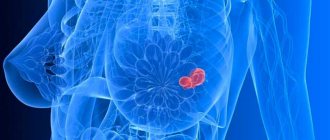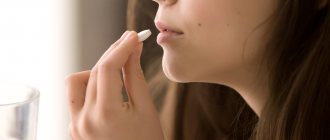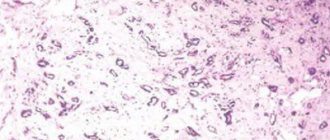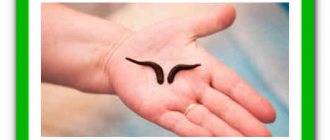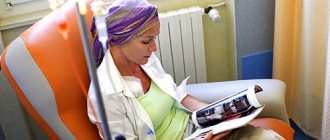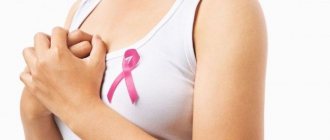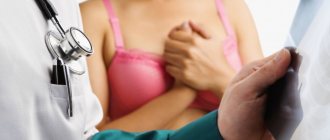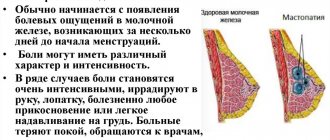A mastectomy is a type of surgery in which breast tissue is partially or completely removed to save the patient’s life. Rehabilitation after a mastectomy takes a long time. As a rule, mastectomy with simultaneous plastic surgery is prescribed for:
- breast cancer stages 2-4
- advanced mastopathy
- abscesses and purulent inflammations, where tissue breakdown occurs
- for the purpose of prevention, when a high probability of breast cancer is determined by genetic analysis
As a rule, diseases affect one of the mammary glands, so mastectomy on the mammary gland is performed on one side. In very rare cases, both breasts are removed (when the process has spread to neighboring tissues).
General rules
The number of women undergoing radical surgery for breast cancer is increasing every year. Treatment of cancer is accompanied by suffering not only physical, but also psychological. After all, removal of the mammary gland (often with the pectoral muscles and surrounding lymph nodes) is not only radical, but also a mutilating operation, during which the lymphatic pathways are crossed, nerves are damaged, the neurovascular bundle is injured with the formation of rough postoperative scars, scar contractures with compression of the shoulder plexus.
In the complex treatment of this disease, radiation therapy takes a leading place. During preoperative radiation therapy, irradiation of the breast also covers the nearest lymphatic drainage pathways. After the operation, irradiation of the metastatic zones and scar is performed. As a result of this treatment, severe disturbances in blood and lymph circulation occur.
Having undergone a mastectomy , of course, affects the psychological state of a woman and her further social adaptation. For some, the post-operative rehabilitation process is not easy. Women need to actively work on themselves in order to regain their former confidence in themselves and their health. You need to carefully monitor any changes in the body, attend preventive examinations and follow all doctor’s recommendations. It is also necessary to make adjustments to your diet.
First of all, it should spare the liver and kidneys as much as possible. In this regard, fried, smoked, spicy and salty foods are excluded. Food should be freshly prepared and sandwiches or fast food should not be consumed. It is equally important to maintain a balanced diet and diet. It is necessary for a woman to receive the required amount of the right fats, proteins, healthy carbohydrates, microelements and vitamins . It is important during this period to combat excess weight, which is often associated with relapses of cancer not only of the breast, but also of the intestines.
The fat requirement is 90 g per day, of which 30 g should be vegetable fats. The body requires 80-90 g of protein per day, which must be obtained by eating beef, low-fat cottage cheese, sea fish, and chicken. It is necessary to limit the consumption of simple carbohydrates (sugar, confectionery, baked goods). It is important to consume complex carbohydrates, the sources of which are cereals, vegetables, fruits, bran, and whole grain bread. With them you need to get the required amount of starches, fiber and pectins (350 g per day).
Nutrition after mastectomy involves:
- Consumption of vegetables, fruits and cereals, which should form the basis of the diet, since they contain the necessary amount of vitamins and minerals, which is very important for maintaining metabolic processes. Seaweed holds the record for the content of microelements, and red and yellow vegetables/fruits contain bioflavonoids , which help restore cellular structures after radio irradiation.
- Consumption of soy (up to 30 g per day) and soy products, as they remove radionuclides and have an antitumor effect.
- Introduction of sprouted grains into the diet. For example, wheat. They have an extensive micro- and macronutrient, vitamin , enzyme and amino acid composition. They have a detoxifying effect, removing heavy metals and carcinogens .
- Eating easily digestible, natural (without preservatives and dyes) and high-quality food.
- Preference for fish and seafood. The Mediterranean diet is the most suitable for such patients.
- Limit salt and spices.
- Small meals 5-6 times a day, including snacks with fruit and natural yogurt; overeating is not allowed.
- Eating foods that regulate intestinal function and prevent constipation : apples, dried apricots, beets, prunes. Dried apricots and raisins are additionally sources of potassium, which enhances the excretory function of the kidneys.
- Cooking dishes by boiling, baking or stewing using a minimum amount of fat, since their heat treatment produces toxic substances.
- If there are no kidney problems, you should take 1.5-2 liters of fluid.
In addition to proper nutrition, you also need:
- Avoid excessive physical exertion, hypothermia, and infections. Moderate physical activity will help you recover faster. Be sure to do gymnastics and self-massage of the arm on the side of the surgical intervention.
- Avoid baths and saunas.
- Do not be in the open sun.
- Maintain a sleep, work and rest schedule.
- Keep the skin clean and avoid cuts and microtraumas of the hand on the operated side.
- Take vitamins and microelements (as advised by your doctor).
Full physical recovery after surgery is possible in 1.5-2 months. The prognosis after mastectomy is favorable if the disease was detected in the early stages: the 5-year survival rate for the first stage is 97%.
How to create a diet?
Nutrition for breast cancer is somewhat different from our usual breakfast, lunch and dinner. You will have to adjust your diet as follows:
- Do not refuse food, do not sharply reduce the total amount of food consumed;
- Introduce six meals a day. In this case, do not reduce or increase the total volume of food, but reduce the volume of 1 serving.
- Water balance – 30 g of water per 1 kg of body. During chemotherapy, the amount of water consumed should be increased. This will allow aggressive chemicals to leave the body naturally faster.
- Forget about food with dyes, sweeteners, artificial sweets.
- Do not buy or take various dietary supplements without the permission and prescription of a doctor.
A diet for breast cancer helps strengthen the immune system and speed up the removal of tumor breakdown products.
Authorized Products
Diet after mastectomy includes:
- Bran bread, whole wheat bread, bran bread and oatmeal cookies. Their consumption rate is up to 300 g per day.
- Soups made with vegetable broth with the addition of cereals and vegetables. It is better to exclude meat and fish broths from the diet or use secondary broth for first courses. Vegetable oil or butter is used for dressing.
- Main courses of veal, beef, chicken or turkey. They are prepared in pieces, boiled or baked. When preparing minced meat products (cutlets or meatballs), they should also be baked with a light and low-fat sauce, and not fried.
- Any fish (dietary and fatty - mackerel, cod, salmon, herring) that can be stewed, boiled, baked with vegetables. Fish should be present in your diet every day. Since its protein is easier to digest than meat protein and carries less load on the kidneys, you should give preference to it.
- Any vegetables (according to preference and tolerance) up to 500 g per day. Half of the vegetables should be eaten raw, the rest should be steamed or baked. Dietary fiber is found in large quantities in sweet peppers, carrots, cabbage, eggplants, and pumpkin.
- Every day include in the menu any fruit up to 500 g, rich in dietary fiber (especially oranges, kiwi, grapefruit, quince).
- Additionally, consume foods high in dietary fiber that remove toxins and absorb excess cholesterol : bran, prunes, gooseberries, raspberries, dates, cranberries, figs, raisins and dried apricots. They can be added to porridge, kefir or eaten as a separate dish.
- Chicken eggs (2 pieces per day, two to three times a week), boiled or scrambled eggs. The same dishes can be prepared from quail eggs.
- Low-fat dairy products. Give preference to natural kefir and yogurt with bifidobacteria without dyes or preservatives. If well tolerated, use milk.
- All cereals are allowed. It is better if dishes made from them go on their own (for example, for breakfast), and not as a side dish for meat or fish. You can make casseroles and cereals with cottage cheese (for an afternoon snack). Preference is given to whole oatmeal, which is known for its high dietary fiber content.
- Pasta - limited and only from durum wheat. If you are overweight, you should use it extremely rarely or eliminate it completely.
- Mild and unsalted cheeses.
- A variety of vegetable oils as a source of healthy polyunsaturated fatty acids. Omega-3 PUFAs (daily requirement 2 g) are found in large quantities in flax seeds and flaxseed oil, walnuts, mackerel, herring, and soybeans.
- Sauces based on low-fat sour cream, fruits, vegetable oils.
- Drinks include weak tea with milk, herbal infusions, compotes, juices (fruit and vegetable), rosehip infusion.
Table of permitted products
| Proteins, g | Fats, g | Carbohydrates, g | Calories, kcal | |
Vegetables and greens | ||||
| cabbage | 1,8 | 0,1 | 4,7 | 27 |
| Brussels sprouts | 4,8 | 0,0 | 8,0 | 43 |
| cauliflower | 2,5 | 0,3 | 5,4 | 30 |
| potato | 2,0 | 0,4 | 18,1 | 80 |
| carrot | 1,3 | 0,1 | 6,9 | 32 |
| cucumbers | 0,8 | 0,1 | 2,8 | 15 |
| salad pepper | 1,3 | 0,0 | 5,3 | 27 |
| salad | 1,2 | 0,3 | 1,3 | 12 |
| beet | 1,5 | 0,1 | 8,8 | 40 |
| soybeans | 34,9 | 17,3 | 17,3 | 381 |
| soybeans (sprouts) | 13,1 | 6,7 | 9,6 | 141 |
| tomatoes | 0,6 | 0,2 | 4,2 | 20 |
| pumpkin | 1,3 | 0,3 | 7,7 | 28 |
Fruits | ||||
| apricots | 0,9 | 0,1 | 10,8 | 41 |
| oranges | 0,9 | 0,2 | 8,1 | 36 |
| watermelon | 0,6 | 0,1 | 5,8 | 25 |
| grapefruit | 0,7 | 0,2 | 6,5 | 29 |
| melon | 0,6 | 0,3 | 7,4 | 33 |
| lemons | 0,9 | 0,1 | 3,0 | 16 |
| nectarine | 0,9 | 0,2 | 11,8 | 48 |
| peaches | 0,9 | 0,1 | 11,3 | 46 |
| apples | 0,4 | 0,4 | 9,8 | 47 |
Berries | ||||
| currant | 1,0 | 0,4 | 7,5 | 43 |
Nuts and dried fruits | ||||
| nuts | 15,0 | 40,0 | 20,0 | 500 |
| brazil nuts | 14,3 | 66,4 | 4,8 | 656 |
| raisin | 2,9 | 0,6 | 66,0 | 264 |
| dried apricots | 5,2 | 0,3 | 51,0 | 215 |
| almond | 18,6 | 57,7 | 16,2 | 645 |
| pumpkin seeds | 24,5 | 45,8 | 4,7 | 556 |
| hazelnut | 16,1 | 66,9 | 9,9 | 704 |
| prunes | 2,3 | 0,7 | 57,5 | 231 |
Cereals and porridges | ||||
| buckwheat (kernel) | 12,6 | 3,3 | 62,1 | 313 |
| cereals | 11,9 | 7,2 | 69,3 | 366 |
| Wheat groats | 11,5 | 1,3 | 62,0 | 316 |
| brown rice | 7,4 | 1,8 | 72,9 | 337 |
Confectionery | ||||
| jelly | 2,7 | 0,0 | 17,9 | 79 |
Raw materials and seasonings | ||||
| honey | 0,8 | 0,0 | 81,5 | 329 |
| milk sauce | 2,0 | 7,1 | 5,2 | 84 |
| sour cream sauce | 1,9 | 5,7 | 5,2 | 78 |
Dairy | ||||
| kefir | 3,4 | 2,0 | 4,7 | 51 |
| cream | 2,8 | 20,0 | 3,7 | 205 |
| sour cream | 2,8 | 20,0 | 3,2 | 206 |
| curdled milk | 2,9 | 2,5 | 4,1 | 53 |
Cheeses and cottage cheese | ||||
| cottage cheese | 17,2 | 5,0 | 1,8 | 121 |
Meat products | ||||
| beef | 18,9 | 19,4 | 0,0 | 187 |
| veal | 19,7 | 1,2 | 0,0 | 90 |
| rabbit | 21,0 | 8,0 | 0,0 | 156 |
Bird | ||||
| chicken | 16,0 | 14,0 | 0,0 | 190 |
| turkey | 19,2 | 0,7 | 0,0 | 84 |
Eggs | ||||
| chicken eggs | 12,7 | 10,9 | 0,7 | 157 |
| quail eggs | 11,9 | 13,1 | 0,6 | 168 |
Oils and fats | ||||
| peasant unsalted butter | 1,0 | 72,5 | 1,4 | 662 |
| wheat germ oil | 0,0 | 100,0 | 0,0 | 884 |
| linseed oil | 0,0 | 99,8 | 0,0 | 898 |
| olive oil | 0,0 | 99,8 | 0,0 | 898 |
Non-alcoholic drinks | ||||
| mineral water | 0,0 | 0,0 | 0,0 | — |
| green tea | 0,0 | 0,0 | 0,0 | — |
Juices and compotes | ||||
| juice | 0,3 | 0,1 | 9,2 | 40 |
| jelly | 0,2 | 0,0 | 16,7 | 68 |
| rose hip juice | 0,1 | 0,0 | 17,6 | 70 |
* data is per 100 g of product
Fight against cancer
Products containing nutrients help fight cancer. They should be present in the diet of a woman who has had breast cancer.
Anticancer effects
- nuts of various types (walnuts, hazelnuts, almonds, Brazil nuts);
- vegetables (tomatoes, eggplants, radishes, pumpkin, ginger and greens);
- fruits (oranges, dates, kiwis, grapefruits);
- olive oil;
- seafood;
- soy, the composition resembles an anti-cancer drug.
Metastasis basics
The following foods block the re-development of breast cancer:
- Cabbage of any kind;
- fatty fish - mackerel, herring, cod;
- garlic and bright yellow vegetables.
Blood purification
This process is facilitated by beets and carrots, raw or cooked. Mixtures or juices of these vegetables should be added here.
Lower cholesterol
Foods that lower cholesterol include:
- apples;
- walnuts;
- Fish and seafood;
- avocado;
- olive oil;
- garlic and onion;
- beans and buckwheat;
- greenery.
Maintaining vitamin C. These are kiwi, lemon, currants and rose hips.
Fully or partially limited products
- Highly extractive dishes (broths) are excluded.
- Fatty poultry and meat.
- Fried foods, smoked foods, pickled vegetables, canned food (meat and fish), sausages, any semi-finished products (due to the content of preservatives). Sausages, sausages, ham, pates contain hidden animal fats, preservatives and dyes.
- Strong tea, coffee.
- The use of hot sauces (vinegar, ketchup, mayonnaise), spices and alcohol is prohibited.
- It is advisable to exclude “fast” or simple carbohydrates (sugar, sweets, jam, cakes, jams, sweet pastries).
- Legumes and mushrooms are limited as foods that are difficult to digest and cause bloating.
Table of prohibited products
| Proteins, g | Fats, g | Carbohydrates, g | Calories, kcal | |
Vegetables and greens | ||||
| canned vegetables | 1,5 | 0,2 | 5,5 | 30 |
| pickled cucumbers | 2,8 | 0,0 | 1,3 | 16 |
| pickled tomatoes | 1,7 | 0,2 | 1,8 | 15 |
| horseradish | 3,2 | 0,4 | 10,5 | 56 |
Bakery products | ||||
| wheat bread | 8,1 | 1,0 | 48,8 | 242 |
Confectionery | ||||
| pastry cream | 0,2 | 26,0 | 16,5 | 300 |
| cake | 3,8 | 22,6 | 47,0 | 397 |
| shortbread dough | 6,5 | 21,6 | 49,9 | 403 |
Cakes | ||||
| cake | 4,4 | 23,4 | 45,2 | 407 |
Chocolate | ||||
| chocolate | 5,4 | 35,3 | 56,5 | 544 |
Raw materials and seasonings | ||||
| mustard | 5,7 | 6,4 | 22,0 | 162 |
| ketchup | 1,8 | 1,0 | 22,2 | 93 |
| mayonnaise | 2,4 | 67,0 | 3,9 | 627 |
| ground black pepper | 10,4 | 3,3 | 38,7 | 251 |
| chilli | 2,0 | 0,2 | 9,5 | 40 |
Meat products | ||||
| pork | 16,0 | 21,6 | 0,0 | 259 |
| pork liver | 18,8 | 3,6 | 0,0 | 108 |
| beef liver | 17,4 | 3,1 | 0,0 | 98 |
Sausages | ||||
| dry-cured sausage | 24,1 | 38,3 | 1,0 | 455 |
Bird | ||||
| smoked chicken | 27,5 | 8,2 | 0,0 | 184 |
| duck | 16,5 | 61,2 | 0,0 | 346 |
| smoked duck | 19,0 | 28,4 | 0,0 | 337 |
| goose | 16,1 | 33,3 | 0,0 | 364 |
Fish and seafood | ||||
| dried fish | 17,5 | 4,6 | 0,0 | 139 |
| smoked fish | 26,8 | 9,9 | 0,0 | 196 |
| canned fish | 17,5 | 2,0 | 0,0 | 88 |
Oils and fats | ||||
| creamy margarine | 0,5 | 82,0 | 0,0 | 745 |
| animal fat | 0,0 | 99,7 | 0,0 | 897 |
| cooking fat | 0,0 | 99,7 | 0,0 | 897 |
Non-alcoholic drinks | ||||
| Pepsi | 0,0 | 0,0 | 8,7 | 38 |
| sprite | 0,1 | 0,0 | 7,0 | 29 |
| tonic | 0,0 | 0,0 | 8,3 | 34 |
| Fanta | 0,0 | 0,0 | 11,7 | 48 |
| black tea | 20,0 | 5,1 | 6,9 | 152 |
* data is per 100 g of product
Menu (Power Mode)
The nutrition menu after breast removal should contain alternating protein and cereal dishes, then it will not seem monotonous. At the same time, remember that fish dishes should prevail over meat dishes, and vegetables or fruits should be present at every meal. Enrich your dishes with seeds and bran, use natural cold-pressed vegetable oils for dressing, changing them constantly. Use fruits and low-fat yogurt for snacks to prevent severe hunger.
For the whole day, 300 g of bread, 50 g of butter and 40-50 g of sugar are allowed. Eggs can be consumed 2-3 times a week, and fermented milk products can be included in the diet daily.
Diet goals
The use of anticancer drugs for breast cancer provokes various adverse reactions. In order to prevent their manifestation, it is recommended to take specific medications, as well as follow a diet that helps reduce the bad influence and improve the body's protective resources.
It should also be taken into account that irradiation methods can contribute to excess weight gain, which, in turn, increases the risk of cancer recurrence. Therefore, nutrition during radiation therapy and chemotherapy should be moderate.
It helps increase your chances of survival and improve your quality of life. Losing excess weight reduces the risks of increased insulin, fat and cancer symptoms.
Advantages and disadvantages
| Breakfast |
|
| Lunch |
|
| Dinner |
|
| Afternoon snack |
|
| Dinner |
|
| For the night |
|
Reviews and results
This rational diet does not have any great restrictions, since all products (except smoked meats, sausages, canned goods and confectionery) and methods of processing them (except frying) are available. A diet can be called a healthy and varied diet. The only disadvantage noted in the reviews is the limitation of salt and simple carbohydrates.
- “... After the operation, the doctor told me to monitor my diet, weight and exercise my arm, gradually increasing the load on it. I started by limiting salt, excluded sweets and baked goods, pork from the diet and gave preference to fish and vegetables (in any form). I can say that the excess fluid and swelling went away very quickly, it became easy to breathe and move. Of course, the surgery and dietary restrictions affected my weight - I lost almost 5 kg in a month. It was difficult to give up cakes and sweets, but I adapted, baking myself sweet and low-fat cookies with dried fruits and nuts”;
- “... After breast removal, proper nutrition and a positive psychological attitude are simply necessary to minimize the risk of relapse. At first, the hand on the side of the operation could not lift the pan and open the car door. But after a year, doing daily exercises and increasing the load, I returned to the normal rhythm of life. By the way, my whole family has started eating right - they support me. I don’t have enough sweets in my new diet, because dried apricots, raisins and prunes also get boring”;
- “... 1.5 years have passed since the operation, the arm has fully recovered, although I worked it very carefully (several times a day). I completely changed my diet and that of the whole family - only healthy food, a lot of vegetables and fruits, bran. I think I recovered quickly. The main thing is that your family supports and helps you”;
- “... It took me a long time to adapt to the new diet: I try not to add enough salt, don’t fry, don’t eat smoked foods or sausages. It turns out that this is the only limitation, so I maintain a normal diet, but sometimes I crave cakes and sweets (I allow myself). This is a healthy diet that everyone should follow. Previously, I ate very few vegetables, was indifferent to fruits, and loved meat and fried dishes. Is this payback for poor nutrition?”
Risk group for complications
The most common complications after breast mastectomy occur in women:
- age group after 60 years
- overweight
- having large breast size (more than size 4)
- suffering from concomitant chronic diseases of the heart and blood vessels, liver, kidneys, lungs, diabetes mellitus
- who underwent courses of radiation and chemotherapy before surgery
In preventing complications, much depends on the professionalism of the doctor, but your own efforts are no less important. You need to be collected, carefully follow all medical recommendations and have a psychological attitude towards recovery.
